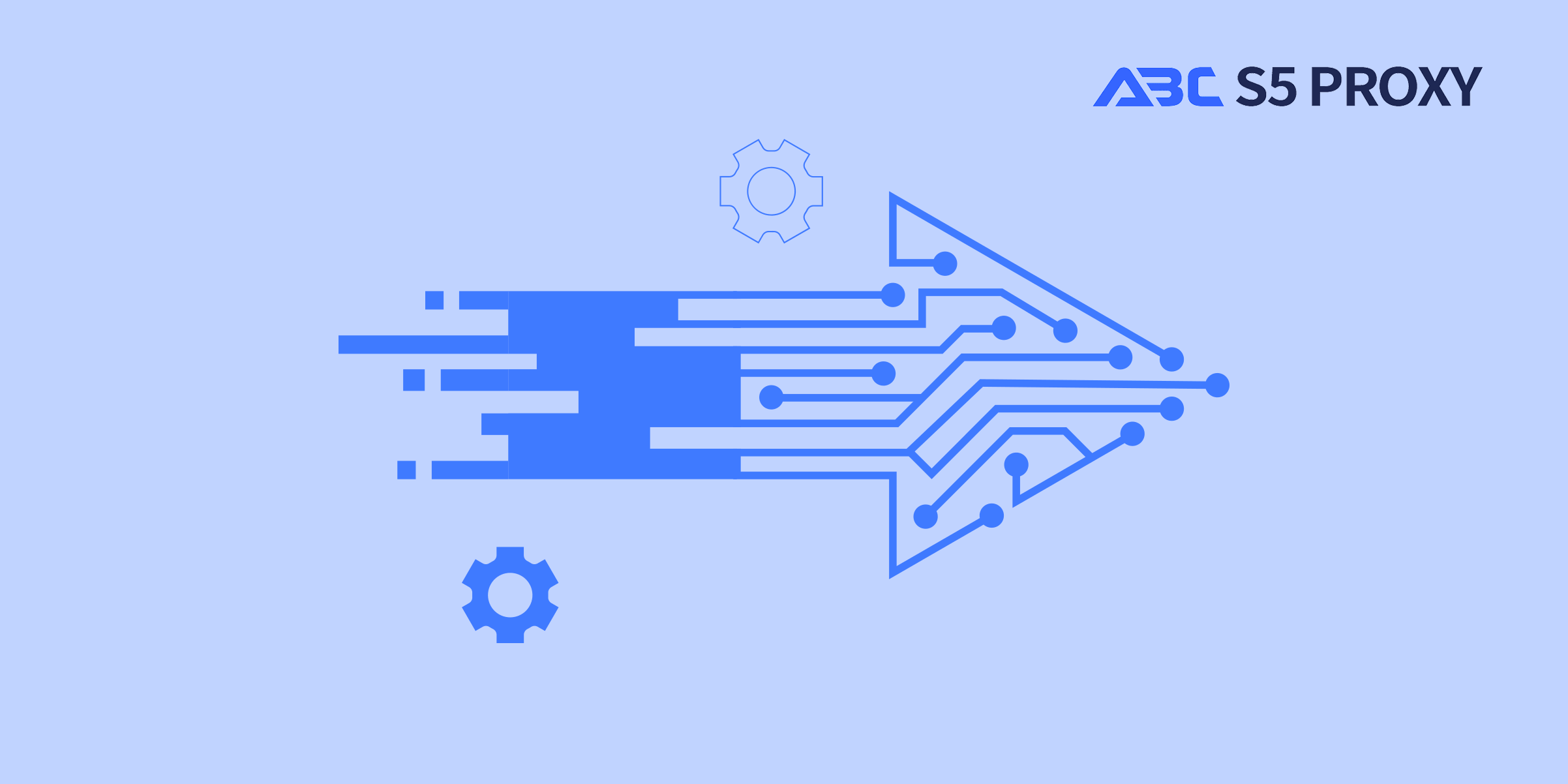Residential Proxies
Allowlisted 200M+ IPs from real ISP. Managed/obtained proxies via dashboard.

Proxies Services
Residential Proxies
Allowlisted 200M+ IPs from real ISP. Managed/obtained proxies via dashboard.
Residential (Socks5) Proxies
Over 200 million real IPs in 190+ locations,
Unlimited Residential Proxies
Unlimited use of IP and Traffic, AI Intelligent Rotating Residential Proxies
Static Residential proxies
Long-lasting dedicated proxy, non-rotating residential proxy
Dedicated Datacenter Proxies
Use stable, fast, and furious 700K+ datacenter IPs worldwide.
Mobile Proxies
Dive into a 10M+ ethically-sourced mobile lP pool with 160+ locations and 700+ ASNs.
Scrapers
Collection of public structured data from all websites
Proxies
Residential Proxies
Allowlisted 200M+ IPs from real ISP. Managed/obtained proxies via dashboard.
Starts from
$0.6/ GB
Residential (Socks5) Proxies
Over 200 million real IPs in 190+ locations,
Starts from
$0.03/ IP
Unlimited Residential Proxies
Unlimited use of IP and Traffic, AI Intelligent Rotating Residential Proxies
Starts from
$1816/ MONTH
Rotating ISP Proxies
ABCProxy's Rotating ISP Proxies guarantee long session time.
Starts from
$0.4/ GB
Static Residential proxies
Long-lasting dedicated proxy, non-rotating residential proxy
Starts from
$4.5/MONTH
Dedicated Datacenter Proxies
Use stable, fast, and furious 700K+ datacenter IPs worldwide.
Starts from
$4.5/MONTH
Mobile Proxies
Allowlisted 200M+ IPs from real ISP. Managed/obtained proxies via dashboard.
Starts from
$1.2/ GB
Scrapers
Web Unblocker
Simulate real user behavior to over-come anti-bot detection
Starts from
$1.2/GB
Serp API
Get real-time search engine data With SERP API
Starts from
$0.3/1K results
Scraping Browser
Scale scraping browsers with built-inunblocking and hosting
Starts from
$2.5/GB
Documentation
All features, parameters, and integration details, backed by code samples in every coding language.
TOOLS
Resources
Addons
ABCProxy Extension for Chrome
Free Chrome proxy manager extension that works with any proxy provider.
ABCProxy Extension for Firefox
Free Firefox proxy manager extension that works with any proxy provider.
Proxy Manager
Manage all proxies using APM interface
Proxy Checker
Free online proxy checker analyzing health, type, and country.
Proxies
AI Developmen
Acquire large-scale multimodal web data for machine learning
Sales & E-commerce
Collect pricing data on every product acrossthe web to get and maintain a competitive advantage
Threat Intelligence
Get real-time data and access multiple geo-locations around the world.
Copyright Infringement Monitoring
Find and gather all the evidence to stop copyright infringements.
Social Media for Marketing
Dominate your industry space on social media with smarter campaigns, anticipate the next big trends
Travel Fare Aggregation
Get real-time data and access multiple geo-locations around the world.
By Use Case
English
繁體中文
Русский
Indonesia
Português
Español
بالعربية

Training an AI model is a complex and crucial step in the development of artificial intelligence systems. It involves teaching the model to recognize patterns and make decisions based on data. In this blog post, we will explore the process of training an AI model, covering key concepts, best practices, and tips to help you successfully train your own AI model.
To train an AI model effectively, it is essential to grasp the basic concepts involved in the process. AI model training is a form of machine learning where the model learns to perform tasks by analyzing and interpreting data. The model adjusts its parameters based on the input data to improve its performance over time.
The first step in training an AI model is collecting and preprocessing data. High-quality and diverse data sets are essential for the model to learn effectively. Data preprocessing involves cleaning the data, handling missing values, and encoding categorical variables to prepare the data for training.
Selecting the appropriate algorithm is critical for the success of AI model training. The choice of algorithm depends on the type of problem you are trying to solve and the nature of the data. Common machine learning algorithms include linear regression, decision trees, support vector machines, and neural networks.
During the training process, the AI model learns from the data to improve its performance. Hyperparameters play a crucial role in the training process as they control the learning rate, network architecture, and other factors that affect the model's performance. Hyperparameter tuning involves adjusting these parameters to optimize the model's performance.
After training the AI model, it is essential to evaluate its performance and validate its results. Evaluation metrics such as accuracy, precision, recall, and F1 score can help assess the model's performance on unseen data. Validation techniques like cross-validation can also provide insights into the model's generalization ability.
Overfitting and underfitting are common challenges in AI model training. Overfitting occurs when the model performs well on the training data but poorly on unseen data, while underfitting happens when the model is too simple to capture the underlying patterns in the data. Regularization techniques and cross-validation can help mitigate these issues.
AI model training is not a one-time process but rather a continual learning journey. It is essential to periodically retrain the model with new data and iterate on the model architecture and hyperparameters to improve its performance over time. Continual learning ensures that the AI model stays up to date and adapts to changing data patterns.
Training an AI model is a complex yet rewarding process that requires careful planning, data preparation, algorithm selection, and evaluation. By following best practices and staying updated on the latest trends in machine learning, you can build robust AI models that deliver valuable insights and drive innovation in various fields. Remember, the key to successful AI model training lies in understanding the data, choosing the right algorithm, and continually iterating on the model to improve its performance.
Featured Posts
Popular Products
Residential Proxies
Allowlisted 200M+ IPs from real ISP. Managed/obtained proxies via dashboard.
Residential (Socks5) Proxies
Over 200 million real IPs in 190+ locations,
Unlimited Residential Proxies
Use stable, fast, and furious 700K+ datacenter IPs worldwide.
Rotating ISP Proxies
ABCProxy's Rotating ISP Proxies guarantee long session time.
Residential (Socks5) Proxies
Long-lasting dedicated proxy, non-rotating residential proxy
Dedicated Datacenter Proxies
Use stable, fast, and furious 700K+ datacenter IPs worldwide.
Web Unblocker
View content as a real user with the help of ABC proxy's dynamic fingerprinting technology.
Related articles

Unlocking the Power of Node Fetch: Mastering POST Requests for Maximum Efficiency
Explore the power of Node fetch post in our latest blog post. Learn how to make secure and efficient HTTP POST requests using Node.js. Dive into the world of backend development with this essential tool.

Tamilyogi FM: Your Ultimate Destination for Tamil Entertainment Online
Discover the latest entertainment on tamilyogi fm. Stream HD movies, music, and more on tamilyogi fm for a truly immersive experience. Find your favorites today!

Brazil Proxy: Unlocking Limitless Online Access in Brazil
Looking for a reliable Brazil proxy? Our blog explores the benefits of using a Brazil proxy server, offering you enhanced online security and access to geo-blocked content. Discover how a Brazil proxy can improve your browsing experience today!